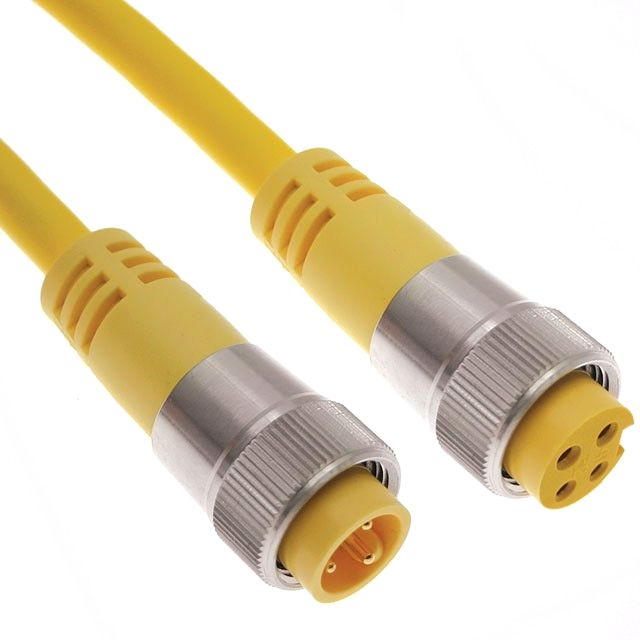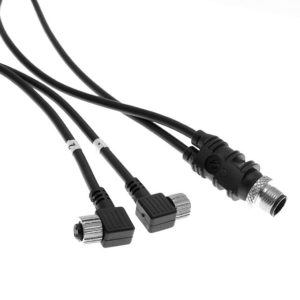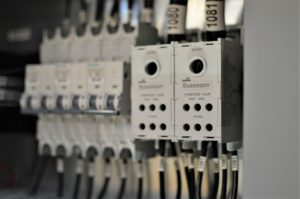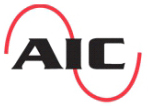It’s no secret that the number of options, available devices, and operational considerations can make choosing industrial cordsets overwhelming. Even if you’re able to make sense of it all, you still need to be able to assemble the system in a way that keeps all of your components connected and running smoothly. Applied Industrial Controls, Inc. can assist with proper power distribution and cordset selection, potentially reducing your panel size, labor costs, and manufacturing lead time. Get in touch with us today to learn more.

Why Should I Consider Using Industrial Cordsets?
Cordsets are used for transferring data, signals, and power between equipment and devices. They connect devices such as HMIs, VFDs, PLCs, wireless access points, sensors, and input and output blocks. Some can also transmit high power levels to motors and motor control switches. Cordsets have durable and reliable performance and are ideal for use in harsh industrial environments. Hardwired cordsets have improved security, and shielded cordsets protect against electromagnetic interference (EMI) noise. A human cannot hear EMI; however, this noise pollution, combined with existing vibration and noises from an industrial plant setting, significantly interferes with the operation of highly sensitive equipment and sensors. This EMI protection is called EMI shielding. Things to consider when selecting a cordset include:- Physical size
- Number of conductors
- Ambient temperature
- Corrosive, moisture, and dust environments
- UV exposure
- Vibration and impact
- EMI issues
- Power, voltage, and amperage requirements
- Grounding requirements
- Application (signals, data, or power), whether dedicated or combination
- Connection type
- How often the connection will be made
- Labor savings vs. component cost
Why Should I Consider M12 Connections?
M12 connections are the most commonly used connectors for industrial applications. You can easily customize M12 connections to various industrial processes and their technology is continually improving. They are able to effectively protect against many unfavorable conditions such as vibrations, impact, temperature fluctuations, UV exposure, water, and dust. M12 connections come in many configurations, which enable their use for many specialized applications. They have a variety of coding features, pin arrangements, and locking features. They can also be some of the most rugged of connectors, provide EMI shielding, and can transfer massive amounts of data in the harshest environment.


What Type of Industrial Cordsets Should I Standardize On?
M8 connectors are the smaller predecessor of M12 connectors, and both are commonly used in new and existing applications. They have been around for over 30 years and still hold fast in industrial applications. Although the initial material cost of installing cordsets is higher than hardwired cables and wires, the return on investment is very quickly realized with lower assembly, installation, and maintenance costs. Using M8 or M12 connectors in an industrial control system reduces the costs and time required when assembling, troubleshooting, starting up, and servicing equipment. Cordsets also reduce wiring errors as they are prewired and tested.
When deciding on the right cordset, it is important to consider all requirements so that a problem-free solution is chosen to give efficient, reliable operation, which increases system resilience. Some things to consider are shielded cables vs. unshielded cables, shielding material, coupling nut material, termination style, and contact plating.
What Should I Consider When Using Power Distribution Blocks?
A power distribution block is a component that distributes electricity to many devices within a circuit from one individual power input. The devices share one electrical circuit instead of using individual power sources. Using a power distribution block has advantages as it saves money, makes arranging devices quicker, more efficient, and safer as there are fewer wires, and enables ease of large scaling. They are required to be used when the short-circuit current rating (SCCR) of an industrial control panel is above 10,000A. However, they can also be used on smaller amperage panels effectively. There are many factors to consider when using a power distribution block, including:
- Wire range
- Continuous current
- SCCR
- Type of upstream overcurrent protective device (fuses or circuit breakers)
- Voltage
- Component spacing and wire bending radius
Keep in mind the difference between the UL1059 and UL1953 standards. UL1059 is the Terminal Block Standard and requires an inspector to confirm the conditions and acceptability of a terminal block when used as a power distribution block. Many power distribution blocks are, in fact, terminal blocks. UL1953 is the Power Distribution Block Standard and can be used for general installations as an inspection of a power distribution block is not required prior to use.
Get in touch with us at Applied Industrial Controls, Inc. to assist with sizing and designing your cordsets and power distribution system.

MANUFACTURERS CERTIFICATIONS

